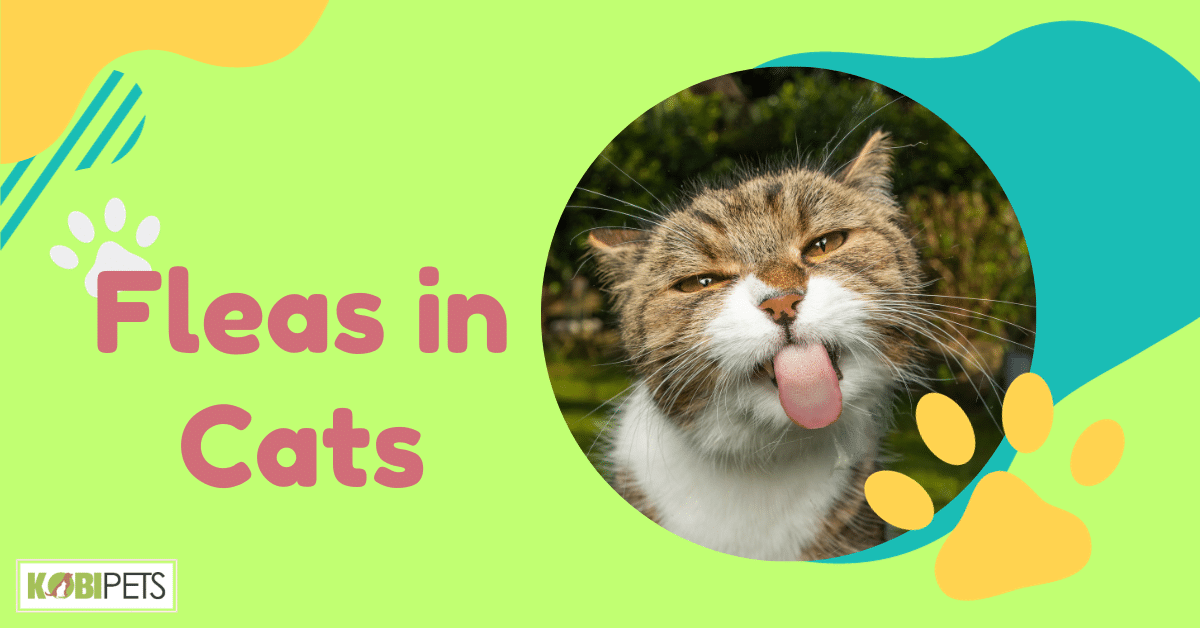
Fleas are pesky parasites that can infest cats, leading to itching, discomfort, and even diseases. Regularly check your feline friends for these tiny hitchhikers, especially near the base of the tail and behind the ears. Combat infestations with preventative treatments and thorough cleaning of your home to keep your cats itch-free and happy.
Fleas are tiny, persistent pests that often target our feline companions. Their lifecycle—spanning the stages of egg, larva, pupa, and adult—is crucial to grasp if we aim to prevent and treat infestations effectively. By delving into how fleas grow and operate, we can better equip ourselves to protect our cats from these troublesome invaders.
How to Tell if Your Cat Has Fleas
Every cat owner cherishes the well-being of their feline companions. Unfortunately, even the most cared-for cats aren’t completely safeguarded against the stealthy invasion of fleas. Early detection of these uninvited guests can vastly streamline the process of managing and completely eradicating them. Here’s how you can pick up on the subtle (and sometimes not-so-subtle) signs of a flea infestation:
1. Excessive Scratching
This is often the first glaring sign of fleas. Cats are fastidious groomers, but a sudden uptick in scratching isn’t normal. The incessant itchiness is a result of the flea’s bite as it feeds on the cat’s blood. As fleas move and bite, they can cause extreme discomfort, and prolonged scratching can lead to open sores, infections, or even larger bald patches from the continuous irritation.

2. Visible Bites or Red Spots
If you notice tiny red bumps or inflamed spots on your cat’s skin, especially around the neck, back, and base of the tail, these are likely bite marks from fleas. Cats, especially those with allergic reactions to flea saliva, might develop more severe skin inflammations, leading to a condition known as flea allergy dermatitis, which results in even more pronounced and painful lesions.
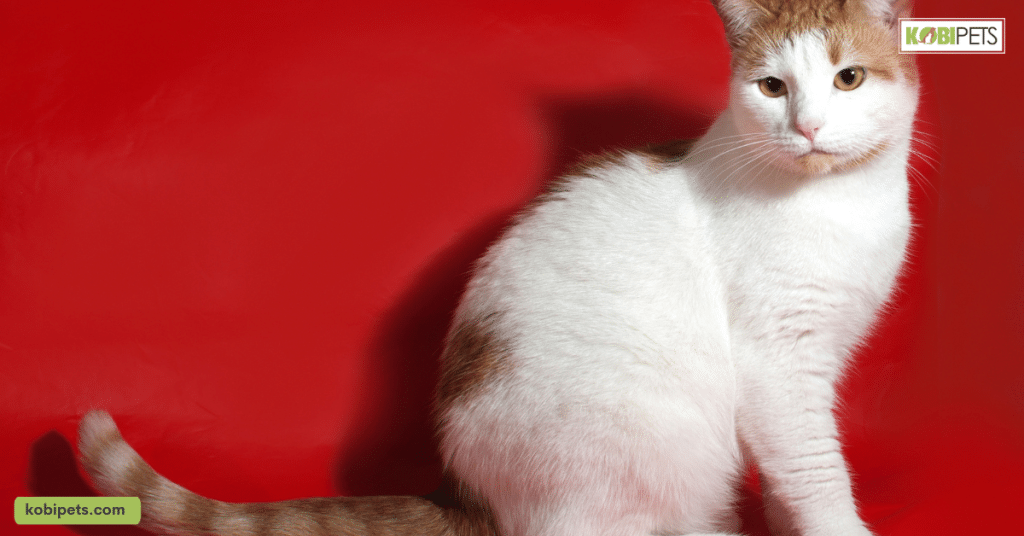
3. Flea Dirt
These black or brown granules, often mistaken for regular dirt, are tell-tale signs of a flea infestation. This “dirt” is flea feces composed of digested blood. An easy way to confirm it’s flea dirt is by placing the granules on a damp paper towel. If it turns a reddish-brown color, it’s indicative of the blood meal the fleas have been enjoying at your cat’s expense.
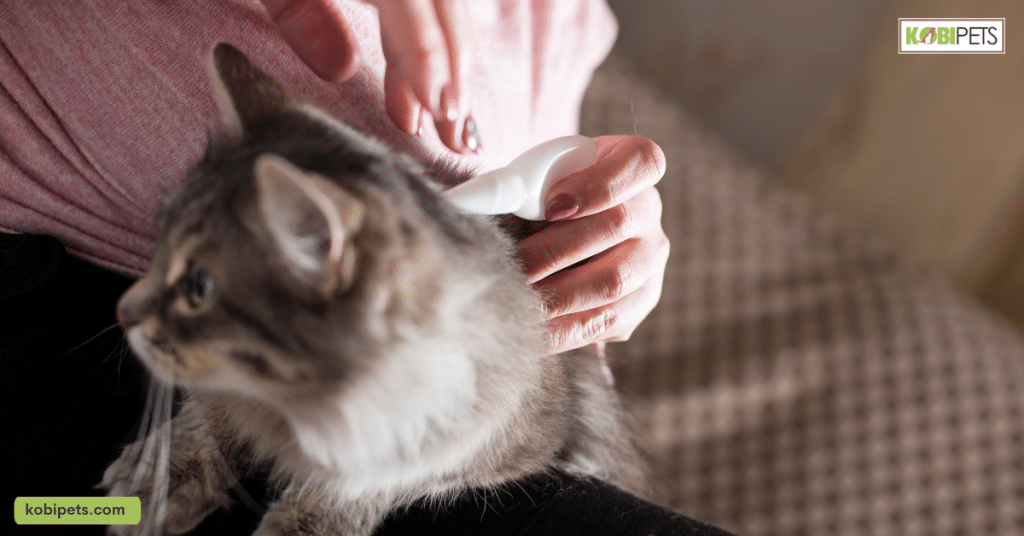
4. Behavioral Changes
Behavioral anomalies can be key indicators. A cat that’s normally relaxed but suddenly appears agitated, restless, or is grooming far more frequently than usual could be in distress from fleas. This excessive grooming is their instinctual way to rid themselves of the itch and the pests, and you might even observe them biting areas where they feel the fleas.
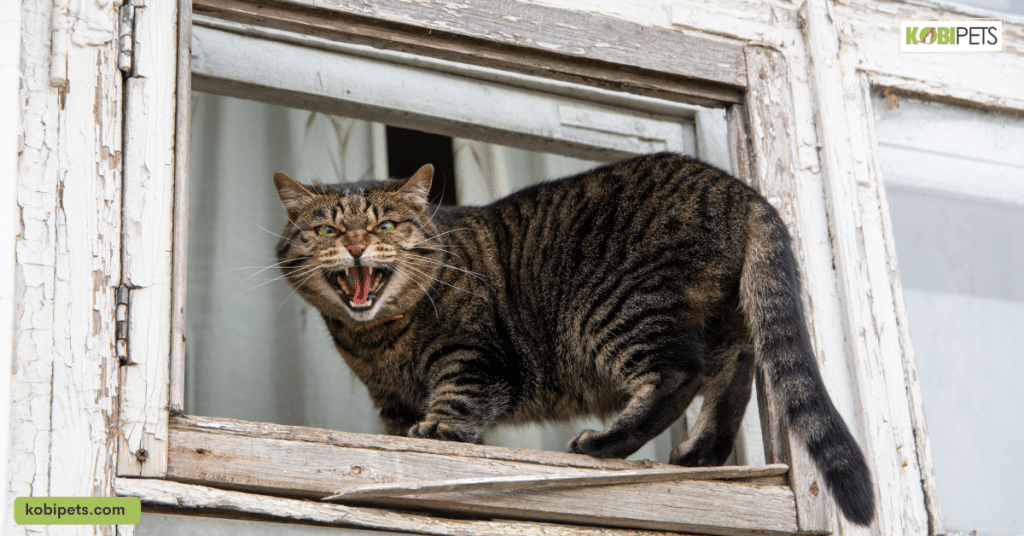
5. Focus on Hotspots
When checking for fleas, some areas are more prone to harbor these pests. Hotspots like the base of the tail, behind the ears, the armpits, and the groin are warmer and offer some level of protection from the cat’s grooming efforts, making them favorite hiding spots. Regularly parting the fur and checking these areas can help in early detection.
The presence of fleas doesn’t just affect your cat’s comfort, but can also lead to more severe health issues if left unchecked. Thus, being perceptive to these signs and acting decisively can ensure your cat remains not just flea-free but also lively and joyful.
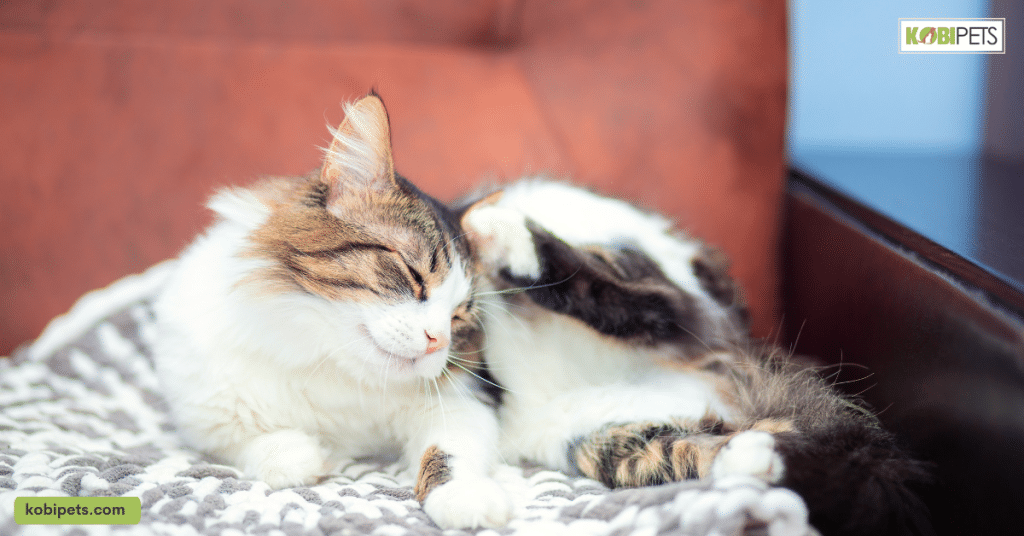
Potential Complications from Flea Infestations
Fleas aren’t just a pesky nuisance; they carry with them a range of health complications that can severely impact our feline friends. The tiny bites of these persistent parasites can introduce a slew of problems, some of which can have lasting effects if not addressed promptly.
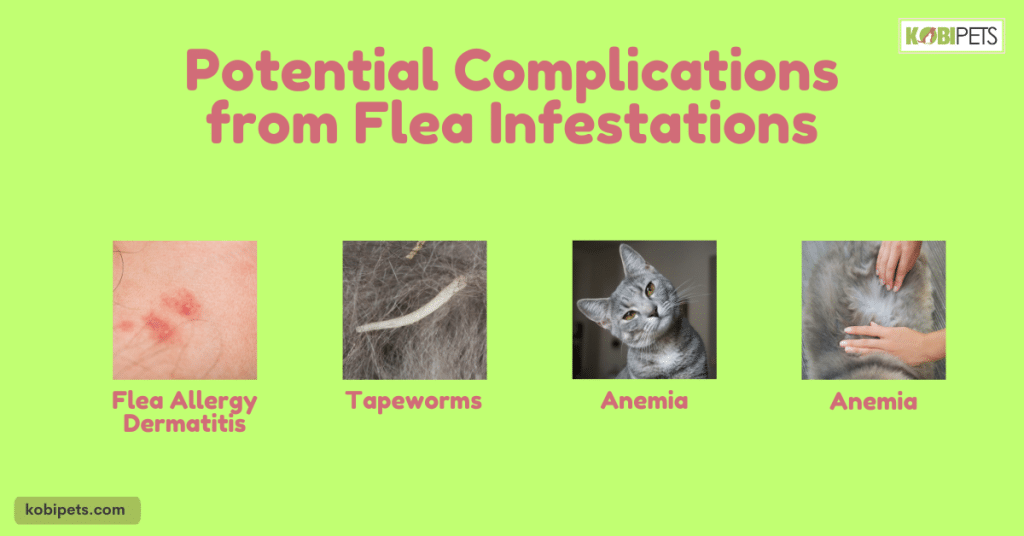
Potential Complications from Flea Infestations
- Flea Allergy Dermatitis: Some cats are allergic to flea saliva. This condition causes intense itching and inflammation, leading to skin infections from persistent scratching.
- Tapeworms: Fleas can be carriers of tapeworm larvae. If a cat ingests an infected flea, often during grooming, it can result in a tapeworm infestation inside the cat’s intestines.
- Anemia: Severe flea infestations can lead to anemia in cats due to loss of blood. This is especially risky for kittens, which can become lethargic and pale from blood loss.
- Bartonella (Cat Scratch Disease): Fleas can transmit the bacteria responsible for this disease. While it mostly affects cats, it can also be passed on to humans through scratches, causing fever and swollen lymph nodes.
Timely intervention is not just a matter of comfort but of health. Flea infestations can escalate quickly, leading to more severe complications.
Proactive Measures Against Fleas
Ensuring our feline companions lead a life of comfort and well-being requires proactive measures, especially when it comes to the ever-looming threat of fleas. These minuscule parasites, beyond being a mere annoyance, can usher in a host of health complications. Here’s a robust strategy to keep them at bay:
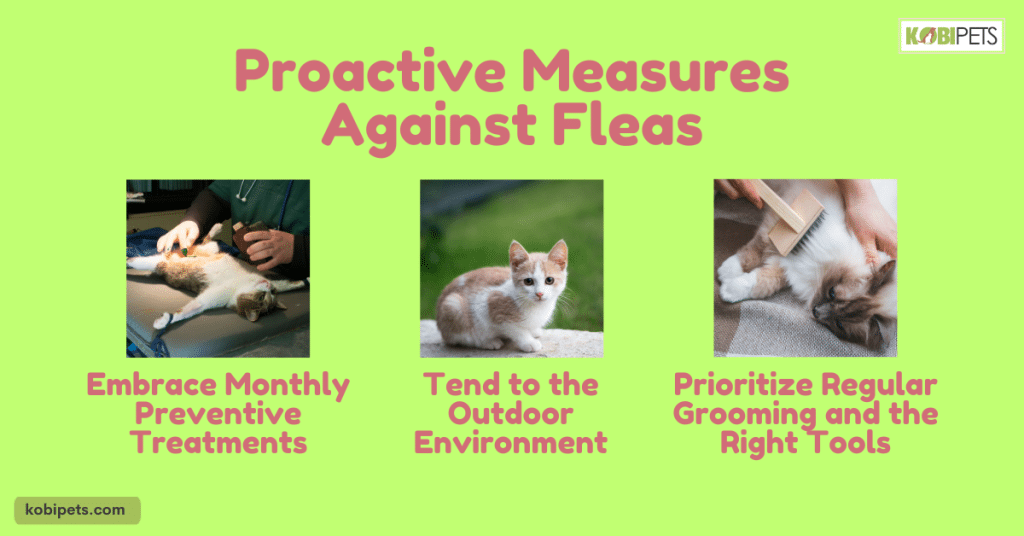
Proactive Measures Against Fleas
- Embrace Monthly Preventive Treatments: Establish a robust defense by adopting monthly preventive protocols. Whether it’s topical applications or oral preventatives, these treatments not only fend off fleas but also disrupt their life cycle, ensuring they don’t find refuge in your pet.
- Tend to the Outdoor Environment: The environment plays a pivotal role in flea populations.
- Lawn Vigilance: A well-maintained lawn is more than just an aesthetic choice. Regularly mowing and ensuring there’s no overgrown vegetation restricts the breeding grounds for fleas.
- Deter Wildlife Intruders: Wild animals, be it stray felines or raccoons, can be inadvertent carriers of fleas. Ensure your yard isn’t enticing to them by securing trash and not leaving pet food exposed.
- Prioritize Regular Grooming and the Right Tools: A meticulous grooming regimen is instrumental in early flea detection.
- Strategic Grooming: Employ a mild, flea-deterrent shampoo to bathe your cat, offering a two-fold benefit of cleanliness and flea deterrence.
- The Magic of Flea Combs: These finely-toothed combs are adept at trapping fleas and their eggs. Regular combing, especially post-outdoor exposure, ensures any adventurous flea is promptly detected and removed.
The journey to a flea-free feline existence hinges on foresight and proactive measures. By intertwining these strategies into your routine, you’re not just guaranteeing your cat a life free from itchiness and discomfort, but also fortifying your living space against potential infestations.
Effective Treatment Options for Infested Cats
Every cat owner dreads the discovery of fleas on their beloved pet. Thankfully, a myriad of treatment options exist to combat these pesky parasites. However, with the range of options available, it’s essential to make informed decisions to ensure our feline friends receive the best care. Below, we’ve outlined several effective treatments, but it’s crucial always to consult with a veterinarian before embarking on a specific treatment regimen.
| Treatment Type | Description | Key Notes |
|---|---|---|
| Topical Treatments | Applied directly to the cat’s skin, often between the shoulder blades. Works by killing or repelling adult fleas. | Ensure it’s cat-specific; avoid dog versions. |
| Oral Medications | Pills or chews that, when ingested, either kill adult fleas or disrupt their lifecycle. | Consult a vet for the right dosage. |
| Flea Collars | Worn around the neck, releasing chemicals that repel or kill fleas. | Ensure a snug fit but not too tight. |
| Flea Shampoos | Specialized shampoos are formulated to kill fleas upon contact during bathing sessions. | Not a long-term solution; provides immediate relief. |
While the treatments above offer effective solutions, the emphasis cannot be placed enough on the importance of vet consultation. Cats are sensitive creatures, and what works for one might not be suitable for another.
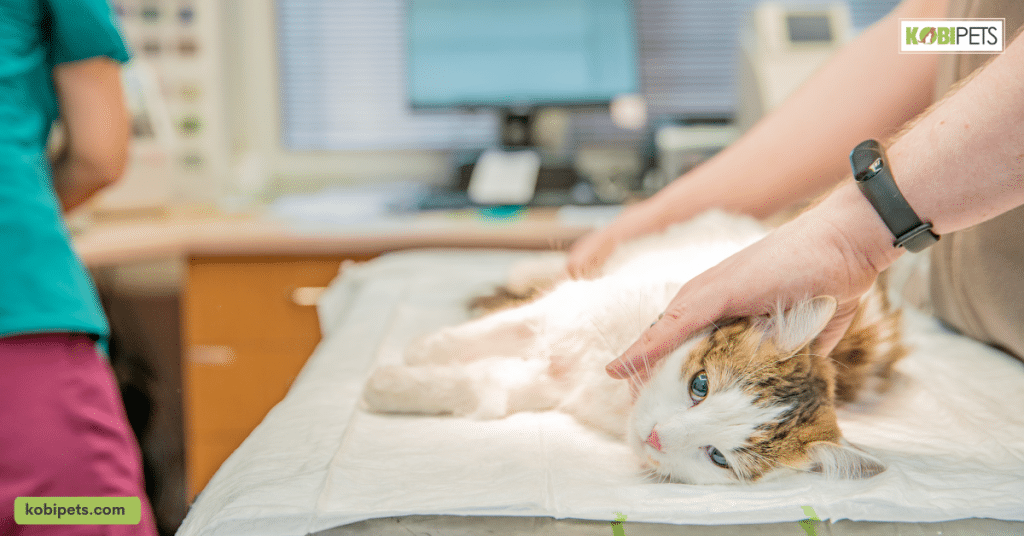
In conclusion
When it comes to treating fleas in your cat, consulting with a veterinarian is paramount. They will guide you in choosing the right treatment from options like topical solutions, oral medications, flea collars, and shampoos.
Remember, always opt for cat-specific products and avoid using dog treatments on your feline friend to ensure their safety and well-being. Your cat’s comfort and health depend on your informed choices.






